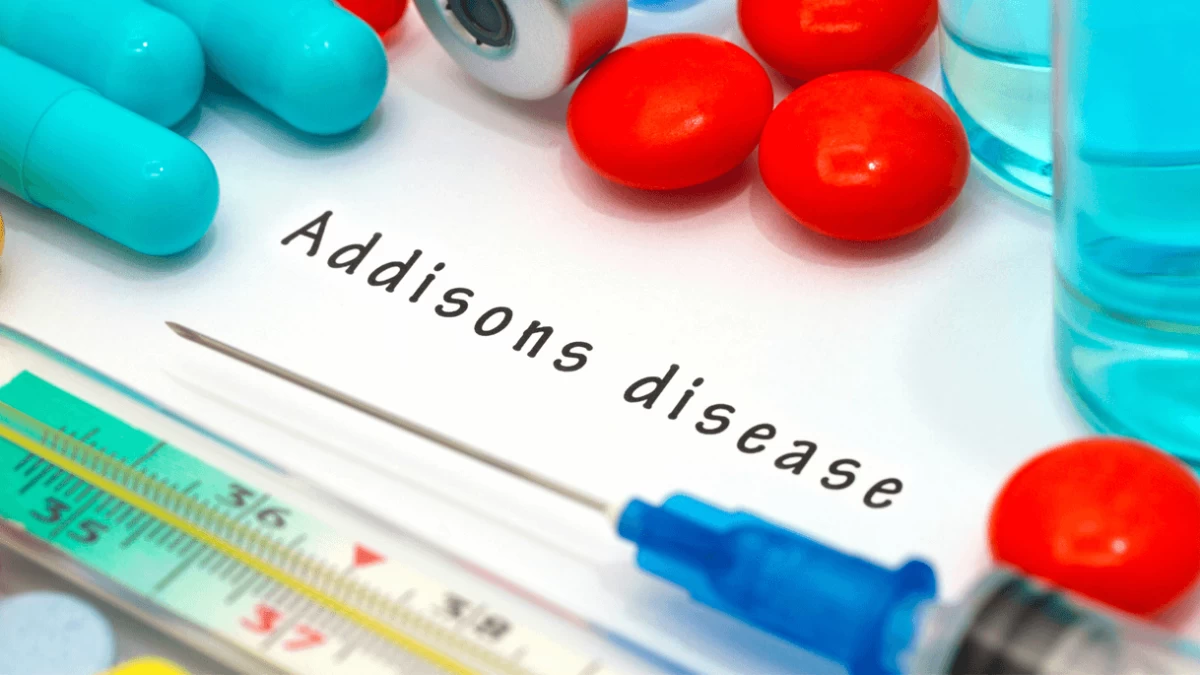Addison’s Disease in Dogs
12.02.2021.
Has your dog recently been diagnosed with Addison’s disease? While this is not a common disease seen in dog’s it can occur. As soon as you see any signs or symptoms noticed with this disease, it would be best for your dog to see a vet right away. Addisonian crisis can be life-threatening without the proper treatment. Fortunately, with an early diagnosis and the proper treatment, they can live a long and healthy life.
What is Addison’s disease?
Addison’s disease is known as hypoadrenocorticism. This is when your dog’s adrenal glands do not produce enough steroid hormones needed for your dog’s body. Steroids play a large part in regulating your dog’s organs and body function. Without steroids, your dog’s body will deteriorate, which can cause serious and life-threatening issues for your dog.
What is the Adrenal Gland?
The adrenal gland is a small triangle-shaped organ that is located right above your dog’s kidneys. This gland is responsible for producing steroid hormones, sex hormones, and substances that help regulate your dog’s blood pressure and electrolyte levels. They also help produces adrenaline, epinephrine, and norepinephrine.

Signs of Addison’s disease
Addison’s is commonly called the “Great Pretender,” meaning that it can look like many different diseases. Common signs and symptoms that are seen in dogs with Addison’s disease are:
- Depression
- Lethargy
- Not eating
- Weight loss
- Vomiting
- Diarrhea
- Bloody stools
- Hair loss
- Increased urination
- Increased drinking
- Dehydration
- Shaking
- Weak pulse
- Irregular heart rate
- Low body temperature
- Painful abdomen
- Low blood sugar
- Increased pigmentation of the skin
Many dogs with Addison’s disease reoccurring issues with gastroenteritis, not want to eat much, low body condition, and inability to deal with stress. Many of these symptoms tend to come and go. If you notice any of these signs in your dog, it may be best for your vet to check your dog for Addison’s disease.
Causes of Addison’s disease
The cause of Addison’s disease is unknown but is believed to be due to an autoimmune issue destroying the adrenal gland. Addison’s disease can occur in any dog, pure breed or mix, but there are a few breeds that are predisposed to this disease, such as:
- Standard Poodles
- Great Danes
- West Highland Terriers
- Bearded Collies
- Nova Scotia Duck Tolling Retrievers
- Portuguese Water Dogs
- Soft Coated Wheaten Terriers

While it can affect any breed and any dog of any age or sex, Addison’s disease is more commonly seen in middle-aged female dogs.
Addison’s disease can be caused by stopping steroids abruptly. If your dog is taking steroids, it would be best to wean them off these medications slowly.
Diagnosing Addison’s disease
Addison’s disease is usually diagnosed when your dog is in an Addisonian crisis. This occurs when they collapse from their body, not receiving enough steroid hormones to function correctly.
Once your dog has been stabilized, your vet will run blood work to see what is causing these issues. Your vet will commonly see high levels of potassium and other abnormalities with sodium, chloride, and calcium on bloodwork. One hallmark sign of Addison’s.
The best way to test for Addison’s disease is with the adrenocorticotropic hormones ACTH stimulation test. This test checks for cortisol levels in your dog’s body and then stimulates their body with ACTH to see if your dog’s adrenal gland is functioning normally. A dog who has Addison’s disease will have a low level of cortisol in its body.
How is Addison’s disease treated in dogs?
If your dog has recently been diagnosed with Addison’s disease, the first thing that your vet will do is make sure your dog is stable and no longer having an Addisonian crisis. Your vet will often want to keep your dog in the hospital on IV fluids for a few days so they can continuously be monitored.
Once your dog has recovered, your vet will start your dog on steroid hormone replacement. Your dog will take two different medications. These are:
- Prednisone: Your dog would take this medication every day to keep the steroid hormones in their body.
- Percortin (DOCP): This would be an injection that your dog would need every 28 to 30 days. Your vet can often show you how to give your dog these injections, or you can bring your dog to your vet once a month for these injections.

When giving your dog these medications, it is best to keep your dog on their medication schedule. Forgetting a dosage could cause your dog to have another Addisonian crisis.
This disease cannot be cured. Your dog will need to take these medications for the rest of its life. Your vet will adjust these medications as needed. They may need to increase these medications during stressful events such as boarding grooming, vet visits, or surgical procedures.
Monitoring your dog with Addison’s disease
If your dog has Addison’s disease, your vet will want to run routine bloodwork every 6 to 12 months to make sure that everything is okay. When they are first diagnosed with Addison’s disease, your dog may need frequent visits to monitor their electrolyte levels to make sure that they are taking the correct dosage of medication.

Prevention and Prognosis of Addison’s Disease in dogs
A dog with Addison’s Disease can live a long and normal life. Some dogs who have an Addisonian crisis will have life-threatening issues and have a decreased life span. While Addison’s disease cannot be prevented, monitoring your dog for any signs and symptoms and seeking veterinary care as soon as possible will help them live a long and happy life.
Final Thoughts
If your dog recently had an Addisonian crisis or was recently diagnosis with Addison’s disease, it can be a terrifying diagnosis at first. Once your dog starts the treatment for this disease, your dog will start to feel much better and return to a normal life. Make sure that you stick to their treatment schedule and follow all recommendations set by your vet to keep them from having any issues. With the proper treatment and management, your dog can live a long and healthy life.
Author: Sara Beth Redding Ochoa vet
Sara Beth Redding Ochoa, DVM, was born in Calhoun, LA. Ever since she was little, she knew she wanted to become a veterinarian. Dr. Ochoa attended Louisiana Tech for her undergraduate school and then St. George University to finish her veterinary education.
After that, she moved to Texas, where she works as a veterinarian. She has Ruby the Schnoodle, a tortoise called Monkey, and Oliver the cat.
World Dog Finder team







Share